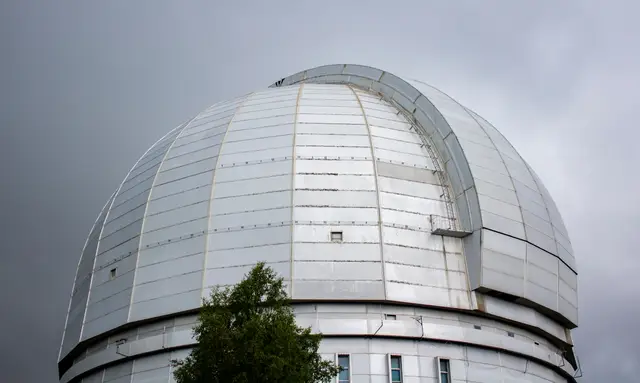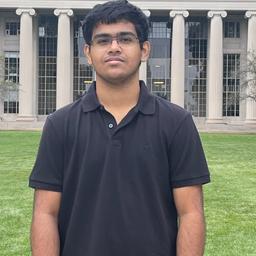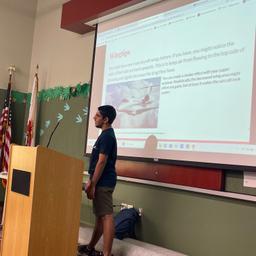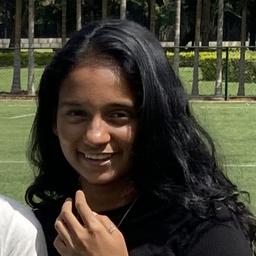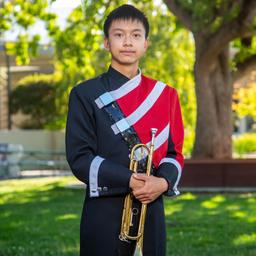You have diverse options when it comes to physics research. You can look into theoretical physics and how mathematical models are developed to explain fundamental physical laws. This category would include concepts such as quantum mechanics and general relativity. You could explore experimental physics, investigating how astrophysicists and cosmologists design and conduct experiments to explain new phenomena and validate predictions about the universe, such as black holes and the universe's origins. Condensed matter physics focuses on the properties of solid and liquid matter, contributing to materials science and nanotechnology. Biophysics applies physics principles to biological systems. Nuclear and particle physics explores subatomic particles and their interactions, with experiments often being conducted in particle accelerators.
In terms of careers, physicists can opt for academic positions, engaging in research and teaching at universities. They can also enter various industries, including electronics, aerospace, and renewable energy, contributing to technological advancements. Opportunities exist in government and national laboratories for research and development roles, often in national security and advanced technology fields. Medical physics involves applying physics principles to healthcare, with roles in medical imaging, radiation therapy, and biophysics. Physics graduates can pursue data science and finance careers, leveraging their analytical and problem-solving skills in data analysis, financial modeling, and quantitative research. Some choose science communication and outreach roles, sharing scientific knowledge with the public through writing, education, and communication. As you can see, the broad range of research areas and possible careers makes physics an adaptable and exciting field that is constantly evolving.
Getting involved in physics research as a high school student can be challenging due to its complex nature. Physics does require a strong foundation in math and science. Luckily most high schools have options specifically devoted to physics and higher math. Because physics can take so many different directions, take time to research the branches of physics that peak your interest most. Read about the experiments and projects you wish you could work on and watch YouTube lectures and channels (such as minutephysics, MIT OpenCourseWare, and Julius Sumner Miller to name a few) about different aspects of physics.
Here are some high school classes, books, and extracurriculars to get you started on your physics journey.
1. Take a Class in High School
Most high schools offer physics and the fundamental math you’ll need.
Obviously physics courses build a fundamental understanding of the subject.
High-level math is crucial for physics. Take courses in algebra, geometry, trigonometry, and, if available, calculus and statistics.
Basic chemistry courses can be valuable, as physics often intersects with chemistry in areas like quantum mechanics.
Computer Science offers the programming and computational skill sets that are valuable for data analysis and simulations in physics.
Nonfiction Writing, especially if you can take a science writing course, can enhance your ability to convey complex ideas to a broad audience, which is essential for sharing your research findings.
Public Speaking or Debate can be helpful when defending your research or communicating your findings at conferences.
The F=ma Exam is not a course, but if you’re passionate about physics, studying for and taking the F=ma exam is a valuable opportunity to strengthen your physics problem-solving. It is also the is the qualifying exam for the USA Physics Olympiad (USAPhO). Read all about preparing for and taking the test in our Essential Guide For the F=ma Exam.
If offered, take AP or honors courses in physics, math, and other sciences to challenge yourself and gain college credit. But remember that excelling in your classes and developing a genuine passion for physics is more important than the number of advanced courses you take.
If you want to progress to more advanced levels, you can pursue virtual classes on MIT OpenCourseWare, Coursera, MITx, and Khan Academy.
2. Read a Book
Physics books can be daunting due to their highly technical content and the math involved, but there are strategies to make them more manageable. Start by breaking down complex concepts into smaller, digestible sections, and take notes as you read. Use external resources like online tutorials and videos to clarify challenging topics. Don't hesitate to seek guidance from teachers or mentors. Mastering physics concepts often involves gradual comprehension and repeated readings to solidify your understanding of the material. Have patience and break the work down into smaller chunks.
Foundational Texts:
Principia Mathematica by Isaac Newton (Published in 1687): This seminal work laid the groundwork for classical mechanics and the laws of motion.
Feynman Lectures on Physics by Richard P. Feynman (Originally delivered as lectures in the 1960s) - These lectures cover a wide range of physics topics and are known for their clarity and accessibility.
The Theory of Everything by Stephen Hawking (Published in 2002) - This book explores the principles of modern theoretical physics and cosmology in a way that's approachable for high school students.
Introduction to the Theory of Relativity by Peter Gabriel Bergmann (Published in 1942) - A concise introduction to Einstein's theory of relativity.
Thought-Provoking Books:
The Black Hole War - My Battle with Stephen Hawking to Make the World Safe for Quantum Mechanics by Leonard Susskind (Published in 2008) - This book delves into the heated debate between Susskind and Hawking on the nature of black holes and quantum mechanics.
Lost in Math: How Beauty Leads Physics Astray by Sabine Hossenfelder (Published in 2018) - Hossenfelder discusses the current state of theoretical physics and questions the pursuit of beauty in theories.
The Order of Time by Carlo Rovelli (Published in 2018) - Rovelli explores the nature of time and its connection to our understanding of the universe.
The Case Against Reality - Why Evolution Hid the Truth from Our Eyes by Donald D. Hoffman (Published in 2019) - This book challenges conventional views of reality, perception, and consciousness from a physics and evolutionary perspective.
Something Deeply Hidden: Quantum Worlds and the Emergence of Spacetime by Sean Carroll (Published in 2019) - Carroll explores the many-worlds interpretation of quantum mechanics and its implications.
To supplement your reading and stay updated on the latest developments in the field, you should consider following reputable physics journals and news outlets, such as Physical Review Letters (PRL), Nature Physics, Physics World, Scientific American, and Quanta Magazine.
3. Extracurricular Study
Extracurricular activities are not just about building your resume but also about genuinely exploring your interests and passions and meeting like-minded peers.
Robotics Team or Club - Robotics combines physics, engineering, and programming, offering a practical way to apply physics principles. You can join or start a robotics team for the FIRST Robotics Competition, VEX Robotics Competition, RoboRAVE International, or other such challenges.
Model Rocketry - Building and launching model rockets can teach you about basic principles of physics, aerodynamics, and engineering.
Amateur Astronomy - Join an amateur astronomy club to learn about the night sky and observational techniques. It's a great way to develop an interest in astrophysics.
Math and Science Competitions - Compete in math and science competitions like the USA Physics Olympiad (USAPhO) (see our guide to taking the qualification test), Math Olympiad, Science Bowl, or Intel International Science and Engineering Fair (ISEF) to test and expand your knowledge.
Science Journalism - Contribute to your school newspaper as a science journalist, covering physics-related news and events.
One of the most powerful physics research opportunities for a high school student is a membership program at a local university or research facility. Collaborating with physics professors and graduate students gives you the chance to work on cutting-edge projects with and develop a deeper understanding of physics principles. These programs can also offer you the chance to publish research findings or to at least be listed as a contributor. They also offer valuable networking opportunities that can open doors to future educational and career prospects in the world of physics. Next to finding a program close to home, your next great opportunity would be a pre-college summer program.
Find research programs close to home
To find physics research opportunities close to home, check out our High School Student Research Opportunities Database. Click on your state, then search based on your location, institution, event type (in-person or virtual), and tuition (paid or free).
Work with a professor
If you have a clear project idea, you can reach out to professors in your field to see if they are open to collaborating with you. Refer to our Guide to Cold-Emailing Professors (written by Polygence literature research mentor Daniel Hazard, a Ph.D. candidate at Princeton University).
Engage in your own research project
Physics is a field that’s actually quite conducive to independent research. As David Miller, a former faculty member, said: “With an average computer and internet access you have far more access to computing, datasets, and every other kind of information and research you could possibly ask for, far more than past scholars such as Einstein and Hawking ever had in their professional lives.” Carly Taylor, a Stanford University senior who has completed several research projects this way, outlined a guide about how to write a self-guided research paper. By reading it, you’ll get a better understanding of what to expect when taking on this type of project. If you would like a little guidance and support, you can also choose to work with one of our Polygence physics mentors.
Enter a competition
The requirements and deadlines that competitions require you to meet provide a very helpful structure to keep your research moving forward. For some ideas, check out our post Best Math Competitions for High School Students. (Even though it is a math-focused post, the SIMIODE Challenge Using Differential Equations Modeling (SCUDEM) has a Physics component.) Another benefit to attending a competition is that you will meet other students, teachers, and even experts in the field you love most.
Here are some top picks for summer physics research programs. We chose them based on a combination of their affordability, name recognition, social opportunities, and academic rigor.
Research Science Institute (RSI)
Hosting institution: Center for Excellence in Education (CEE)
Cost: Free
Application deadline: Early January
Note that RSI is highly selective and only admits about 80 high school students each year from a pool of thousands of applicants. Check out “How to Get Into Research Science Institute (RSI)”, our entire post dedicated to tactics for increasing your chances of being accepted. The program is hosted at the Massachusetts Institute of Technology (MIT). Students are selected based on their academic achievements, research potential, and personal qualities such as creativity, leadership, and motivation. RSI is free, with all expenses paid (including travel, room and board, and research supplies). Also be sure to check the site for the most current application information.
Simons Summer Research Program
Hosting institution: Stony Brook University
Cost: Paid fellowship
Format: In-person (Stony Brook, NY)
Application deadline: Early February
Also known as the Simon Fellowship, this prestigious and highly selective 8-week program matches about 30 students each year with a Stony Brook faculty mentor in various fields, including physics. Students are selected based on their academic achievements, research potential, and personal qualities such as creativity, curiosity, and dedication. This program gives you a great opportunity to join research groups, produce a research abstract, work with a supportive community of peers and mentors, plus receive a stipend award. Check the site for the most current application information.
MITES Summer
Hosting institution: MIT
Cost: Free
Format: In-person (Cambridge, MA)
Application deadline: February 1st
MITES is a challenging 6-week, residential program for rising seniors at MIT geared toward historically underrepresented and underserved students. You’ll take seminars with esteemed STEM professionals and tour local companies that employ MITES alumni and MIT labs. You’ll also be a part of an extraordinary success community. Many alumni go on to study at MIT, Harvard, Princeton, Brown, and Stanford. It’s an amazing opportunity. For an in-depth look, read our “Guide to the MITES Programs at MIT” and also be sure to check the MITES Summer site for the most current application information.
Granted all three of the above programs are highly selective. Some other summer physics programs to look into include the Clark Scholars Program, CERN Summer Student Programme (for particle physics), the Perimeter Institute International Summer School for Young Physicists (ISSYP), and SIGMA Camp.
Ensuring the safety of high school students and providing the necessary supervision can be challenging for research institutions and laboratories, which is part of the reason why internships purely in the field of physics can be difficult to come by. Competition from college-level students with more skills and experience is another reason. Some opportunities do exist, however, and it’s always worth checking out colleges in your area to see if they offer opportunities for qualified high school students.
High School Summer Internship
Hosting institution: Princeton Plasma Physics Laboratory
Location: Princeton, NJ
Deadline: Mid-March
Cost: Free
If you’re interested in plasma physics and fusion energy, this is the perfect internship for you. Note that you must be a graduating senior and that this program takes place the summer after your senior year of high school. Housing is also not provided. That said, PPPL is one of the leading research laboratories in the world dedicated to studying and developing controlled nuclear fusion as a potential source of clean and sustainable energy.
Goddard Space Flight Center Internship Program
Hosting institution: NASA
Location: Various locations (Virginia, Maryland, New York, West Virginia)
Deadline: N/A
Cost: Free
The Goddard Space Flight Center offers hundreds of internships at its various locations for current sophomores and above. These internships are unique opportunities as they allow students to take advantage of some of NASA’s groundbreaking missions and projects. Students will also work under the guidance of a NASA mentor. Check the site for the most current application information.
For all of the physics internships we recommend be sure to read Physics Internships for High School Students
A good way to start is to delve into your own areas of interest. As you do your reading and coursework, notice what fascinates you most. Is it quantum mechanics, astrophysics, or some other subfield of physics? Once you’ve pinpointed that area, take the time to review current research and stay informed about recent developments. Look for gaps in existing knowledge, unsolved problems, or emerging trends that spark your curiosity.
Polygence Scholars Are Also Passionate About
When brainstorming research ideas, it's also important to consider the real-world relevance of your chosen topic. Think about how your research can address practical issues or applications. This could lead you into areas such as renewable energy, climate change, medical physics, or materials science, where the impact on the real world is evident.
Exploring lesser-known and intriguing physics fields can also open up unique research opportunities. Consider topics like topological insulators, quantum entanglement in biological systems, quantum computing, or the physics of soft matter, which encompasses polymers and colloids. These areas offer untapped potential and room for exploration.
The type of physics research project you embark on also depends on what tools you have at your disposal. Whether it involves building experimental setups, running simulations, conducting data analysis, or engaging in astrophotography, your choice should reflect your passions and available resources. Try to strike a balance between your ambitions, your resources, and your deadline. One way to get around the need for labs and expensive equipment is to do a literature review. A literature review is a synthesis of key work that has been conducted about a topic over several years. Doing the research to conduct a literature review will deepen your understanding of your chosen physics topic. Here are some physics project ideas to get you inspired.
Why are geckos' feet special?
Walking on walls and ceilings isn't just a superpower from Spider-Man – geckos and even houseflies are able to go where no human can. Through experimentation and literature studies, this project investigates the nano-physical concept of "adhesion" to demonstrate why geckos have these unique abilities.
Idea by physics research mentor Parker
Rigid body dynamics
Rigid body dynamics studies how rigid objects behave as they are acted on by forces, such as when they collide with each other. This was one of the first things Pixar had to simulate when making Toy Story and it is actually an active field of research at Disney today. In this project, you will explore the mathematical methods of rigid body dynamics and develop your own program to simulate balls bouncing off a plane. This resource from Khan Academy is a great place to start exploring rigid body systems.
Idea by physics research mentor Ina
Mountains from another dimension
Mountain ranges tend to have "fractal" surfaces; you can sometimes see these "finger-like" ridge lines splitting away from a peak and descending down. Fractals can famously have dimensions in between the usual 2 or 3 dimensions we are used to. You could use publicly available elevation data to measure the "fractal dimension" of a mountain range. Does the fractal dimension tell us something about the topography or geology of the mountain range?
Idea by physics research mentor Anoop
Check out even more project ideas on the 12 Physics Research and Passion Project Ideas For High School Students post.
You can also brainstorm your own project ideas based on what technical challenges interest you. If you want help narrowing down your physics topic, the Pathfinders program gives you the chance to meet with three different mentors who specialize in your fields of interest. You can discuss your project ideas with them, and they can help you grow your idea, discover new research techniques, and point the way to great resources and alternative options.
Here are some inspiring physics projects done by some of our Polygence Scholars.
Ideal Moderators for Nuclear Fission Reactors
Arif's goal was to find the most suitable compound(s) for a nuclear reactor moderator to achieve an efficient chain reaction. To do this, he needed to find a material that can slow down neutrons effectively, increase the probability of nuclear fission, and meet certain criteria: quick thermalization of neutrons, low neutron absorption, and cost-effectiveness. He found that materials like Helium for fast reactors and water or graphite for thermal reactors work well. In this study,he focused on two substances, Zirconium Hydride and Yttrium Hydride, to assess their suitability as moderators for slow water reactors. You can read his research here.
Online Physics Calculator
Carl's goal was to create a Physics Calculator website that could take user input and provide answers to physics problems, along with showing the step-by-step process of solving these problems. To achieve this, he coded the website to handle multiple equations and made it adaptable for adding more equations and concepts in the future. The website's purpose is to assist physics students in understanding complex formulas by breaking them down into easier-to-follow steps, thus making physics learning more accessible and practical. You can use his resource here.
Molecular Dynamics and Particle Simulations
Rishaad did both a literature review and a coding project! His goal was to use molecular dynamics (MD), a computer simulation technique, to explore phenomena in particle physics that occur at scales too small to be seen by the human eye. He wrote a research paper on the subject and also developed two simulations: one based on particle collisions and another based on heat.
Check out all the physics research projects done by Polygence Scholars.
Physics research papers differ from papers in subjects like psychology or history due to the strong emphasis on quantitative data, mathematical models, and experimental verification. These papers rely heavily on equations and often prioritize concise, precise language. Clarity and rigor are priorities in physics papers, whereas humanities or social science papers may allow for more narrative or qualitative approaches.
As you gather information, you can begin outlining your research paper. The format of a physics research paper typically includes:
Abstract - A concise summary of the paper's objectives, methods, results, and conclusions.
Introduction - Clearly state the research question, hypothesis or thesis, and the significance of the study.
Theoretical Background - Provide relevant theoretical and mathematical frameworks.
Experimental Methods - Detail the procedures and equipment used in the experiments.
Data Presentation - Include tables, charts, graphs, and equations to present data.
Results - Analyze and interpret the data, discussing any patterns, trends, or deviations.
Discussion - Interpret the results, relate them to the research question, and consider their broader implications.
Conclusion - Summarize the key findings and their significance.
References - Cite all sources, including previous research and relevant literature.
If you need more general guidance overall, here’s a great article on how to write a good research paper. Also, if you have some ideas and want the support of a skilled expert, you can work with a Polygence physics mentor.
Once you’ve researched, written, and perfected your research paper, it’s time to introduce it to the world. You could enter it at a science fair or publish it in a journal. Publishing your research in a peer-reviewed journal can take the great work you’ve already done and add credibility to it. It also makes a stronger impression than unpublished research. The process of having your work reviewed by advanced degree researchers can be a valuable experience in itself. You can receive feedback from experts and learn how to improve upon the work you’ve already done.
Here are some publications you could look into.
The Journal of Emerging Investigators (JEI)
JEI is an online, peer-reviewed journal that publishes research by middle and high school students in various scientific disciplines, including physics. Please note that JEI requires that a teacher, mentor, or Principal Investigator of a lab submit your research on your behalf.
Cost: Free
Deadline: Rolling
Type of research: Original research in the biological and physical sciences written by middle and high school students.
Journal of High School Science
The Journal of High School Science is a peer-reviewed quarterly publication showcasing high school student research in the realm of science (including physics), technology, engineering, arts, and mathematics.
Cost: Free
Deadline: Rolling
Type of research: STEAM-based research or innovations by high school students.
Regarding getting your project accepted and published at these or any other peer-reviewed journal: Be prepared for the possibility of rejection or revisions. Scientific publishing is a competitive process, so maintain a positive attitude and be persistent in your efforts to improve and disseminate your research. (Quote from The Journal of High School Science website)
Research Archive of Rising Scholars
You can also showcase your work in The Research Archive of Rising Scholars (RARS), an open-access preprint archive for research articles written by young scholars, like you, from around the globe. Having your work circulated through RARS means that you’ll have a link to share with others so that they can read and engage with the research you’ve completed. Since this is a non-peer-reviewed preprint server, students who showcase their work on RARS can decide at any point to submit their work to a journal or competitions for consideration.
Looking for a more competitive route for showing off your work? Be sure to read Top 9 Physics Competitions for High School Students












